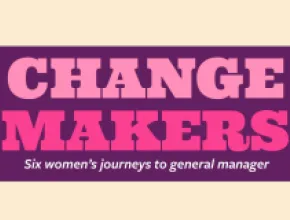In a still-dim economy, the lights of the travel industry may appear faint to some planners—especially those in the government segment—but according to many economic forecasters, the travel business is shining. And meeting planning is its brightest star.
Since the economic recovery began in March 2010, the domestic travel industry created jobs 14 percent faster than the overall economy, recovering 61 percent of industry jobs lost during the Great Recession as compared with 54 percent for the entire country, according to the U.S. Travel Association.
U.S. Travel expects the travel industry to add nearly 100,000 more jobs this year—about 20 percent more than last year—bringing the total number of industry jobs in 2013 to more than 7.6 million.
David Huether, senior vice president of research and economics for U.S. Travel, sees the meetings and conventions business basically propping up the expected slowing growth in overall business travel this year at a stagnant rate below 1 percent.
“I think the meetings business is a bit more resilient than transient business travel,” Huether says. “It’s that sort of face-to-face activity, where connections are made, that is less susceptible to being replaced by information technology. So the outlook is fairly positive.”
Support for Huether’s contention is supplied by The Active Network, an event management firm that issued a new study showing the corporate meetings business has fully rebounded.
The study found that the number of electronic requests for proposals (RFPs) for meetings that were sent to hoteliers in five major convention destinations—Chicago, Las Vegas, Los Angeles, New York and Orlando—surpassed 2008 levels by 6 percent in just the first 10 months of last year. Moreover, the study found that 46 percent more electronic RFPs were sent through October 2012 than all of 2009, during the depths of the recession.PageBreak
Growth Industry
The federal Bureau of Labor Statistics (BLS) also sees a bright future for meeting planners, projecting that “employment of meeting, convention and event planners is expected to grow 44 percent from 2010 to 2020, much faster than the average for all occupations.”
And although the job of event planner has slipped to 14th place in U.S. News & World Report’s list of the 100 best business jobs this year from first place last year, the magazine states that “openings are ample in this profession.” However, the magazine also warns that “there are also a lot of applicants” in a profession whose median annual salary, according to the BLS, was $45,260 in 2010.
Experience No Virtue
Dawn Penfold, president of Meetingjobs, an event planning employment recruiting firm, sees reason for optimism this year, although not quite as enthusiastically as U.S. News.
“There’s been an uptick this year over the past two or three years,” Penfold says, referring to 2012. “It’s getting better.”
The sweet spot, according to Penfold, is for relatively junior planners performing logistical work—both as full-time employees and independent contractors—at event planning firms.
“I’m getting more listings from third-party companies,” Penfold says. “Companies are outsourcing their meetings departments. A lot of people would rather be in the corporate or association environment because of the security it offers, but the jobs just aren’t there.”
Employers appear more demanding of job applicants, preferring that candidates currently work at essentially the same task but also not be over-qualified.
“Everybody wants the perfect hire,” Penfold says. “They’re over-taxed; there’s too much work to do. And they want to make sure it’s the right hire because they’re afraid of losing headcount.”
If a new hire doesn’t work out in a meetings department, senior management may not allow the department to refill the position, Penfold explains, “so people are being industry specific and number-of-years specific.”PageBreak
Penfold relates an incident with one third-party planner, a medical education company:
“They wanted medical experience, but they wanted somebody who had experience in doing product launches and incentive meetings, and they would not venture out from that. If somebody had experience doing grand rounds or dinner meetings; that wasn’t the kind of experience they wanted.”
Employers shy away from more experienced planners, Penfold contends, because they fear that those planners will jump to better jobs once the economy rebounds fully.
“It’s still pretty difficult out there,” Penfold says. “There were a lot of people with 10-plus years of experience who were let go, and they’re the ones having a hard time finding a job. I know quite a few who left the industry, retrained themselves, or who have become independent contractors or started their own businesses.
“Some hiring officials say they want three to five years of experience,” she adds, “but three to five years ago nobody was hiring. Trying to find a candidate with three to five years’ experience is almost impossible.”
Although organizations with highly selective requirements are having a hard time finding candidates, according to Penfold, they still tend to be very finicky.
“People would rather hire people with jobs unless it’s a really good candidate,” Penfold says. “I always have hiring officials who want to find out if it was a real layoff or whether a company was also trying to get rid of dead weight.”
The narrow requirements for new hires, especially when those hires are drawn from currently employed candidates, have buttressed compensation while not necessarily growing it substantially, according to Penfold.
“They’re offering about the same,” she says. “They’re being fair with salary. I don’t think they could cut salaries because people aren’t willing to lose jobs for less.”
For planners playing the job field, Penfold offers the following advice:
“The important thing is to make sure you have a solid background, solid resume, good references and good excuse if you’re out of work—and to keep at it. You have to keep plugging away. You’ve got to keep on with the social media and the face-to-face networking.”
Marshall Krantz has covered the meetings industry for the past 15 years.






